Sommaire
In-depth Analysis of the Spread of Information about Bakhmut and Avdiivka on Social Media.
While the Israeli conflict dominates the media space, Saper Vedere has conducted a thorough year-long analysis of discussions surrounding the Ukrainian conflict on social media. From a situation in Bakhmut, where propaganda was in full swing, to the coverage of Avdiivka, where there is almost no content circulating, there are many lessons to be learned.

The Spread on X
Around the Battle of Bakhmut, numerous actors have taken positions on Twitter, both nationally and internationally. This demonstrates the variety of stakeholders who can weigh in on the contentious debate or comment on activities.

In terms of community presence, we observe the overwhelming presence of actors promoting Russia's interests, whether in patriotic communities, far-right circles, or among pro-Russian journalists and experts. In contrast, a lighter presence is seen from a community (in blue) made up of politicians, media outlets, NGOs, and others.
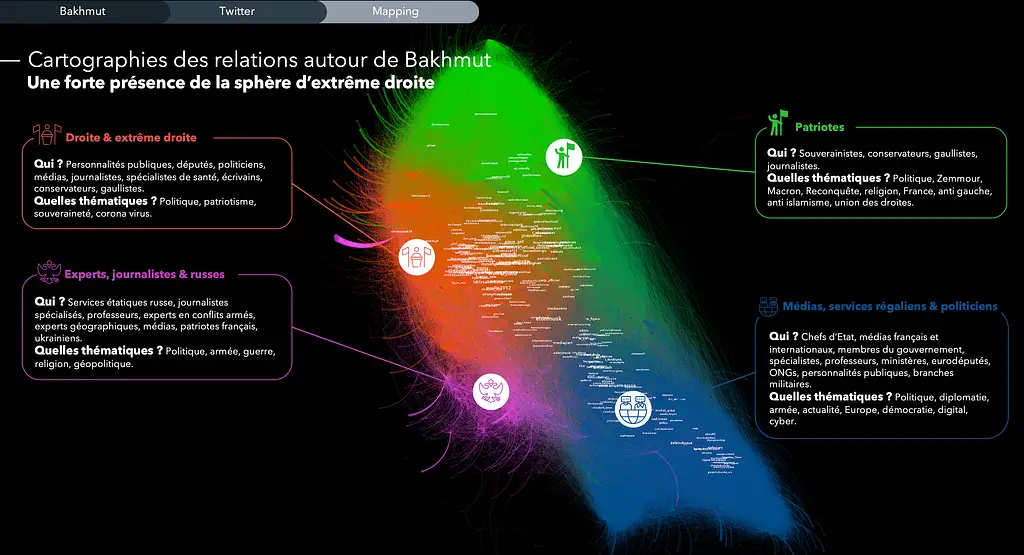
Since then, during the Battle of Avdiivka, the balance of power among actors has clearly shifted in favor of pro-Ukrainian figures. However, the volume of tweets and the number of actors has significantly decreased, indicating both less pro-Russian propaganda and diminished interest from Western audiences.

The conversations, however, are still organized similarly, with clearly defined pro-Russian and pro-Ukrainian axes, both during the Bakhmut period:

And during the Battle of Avdiivka. Yet, it is clear that the volume of actors within both camps has significantly decreased.

Regarding the opinions expressed and circulated, there has also been a noticeable decline, with an overwhelming number of opinions during Bakhmut:
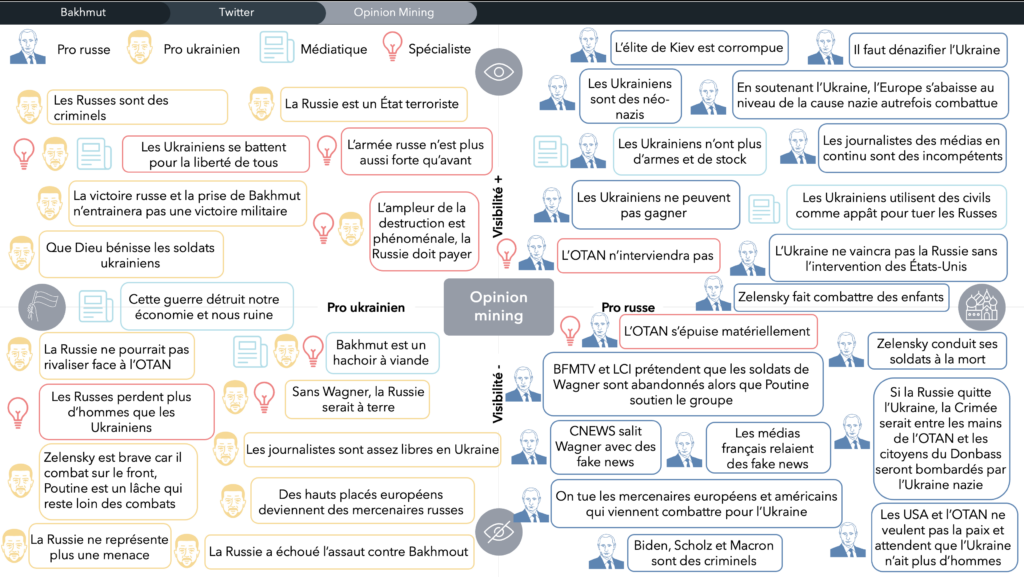
Whereas the opinions on Avdiivka are clearly sparse:

In summary, Twitter is used as a global and public network, bringing together information, policies, and serving as a true axis of propaganda.
The spread on LinkedIn
On LinkedIn, more specialized opinions on defense are shared. Russian propaganda was not absent during Bakhmut, with numerous narratives and well-activated networks:

The actors are clearly militarized or specialists:

However, the dominant voices are primarily pro-Ukrainian:

Regarding Avdiivka, the dynamics remain largely the same in terms of activity, with widespread pro-Ukrainian propaganda. General David H. Petraeus, remains highly active and influential in analysis with the Institute for the Study of War, while the pro-Russian axis is very weak, with only a publication by Jean-Bernard Pinatel:
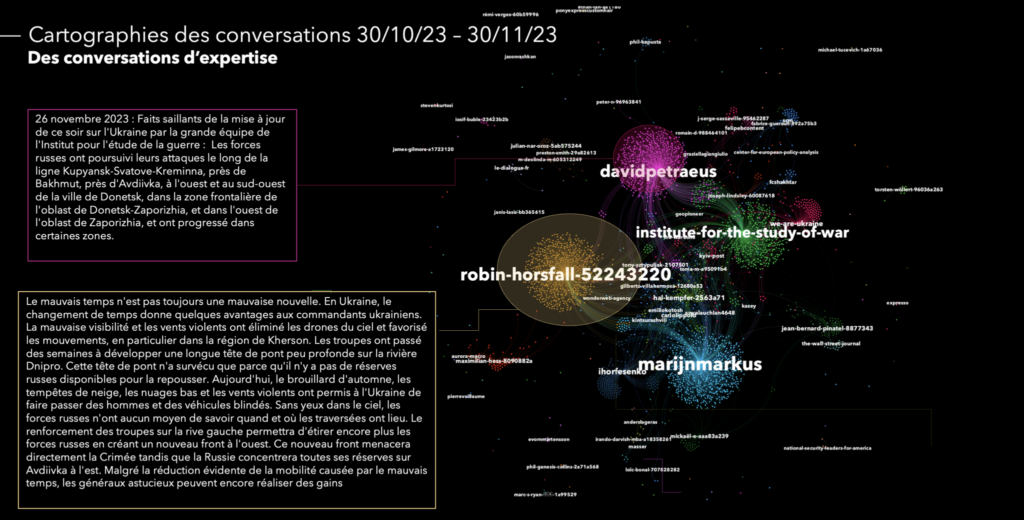
The propaganda on Facebook
Facebook is undoubtedly the most interesting platform, with the recycling of African Wagner accounts that were mobilized to spread propaganda around Bakhmut:

This represents the vast majority of stakeholders expressing themselves on Facebook:

The narratives here are clearly more focused on NATO:
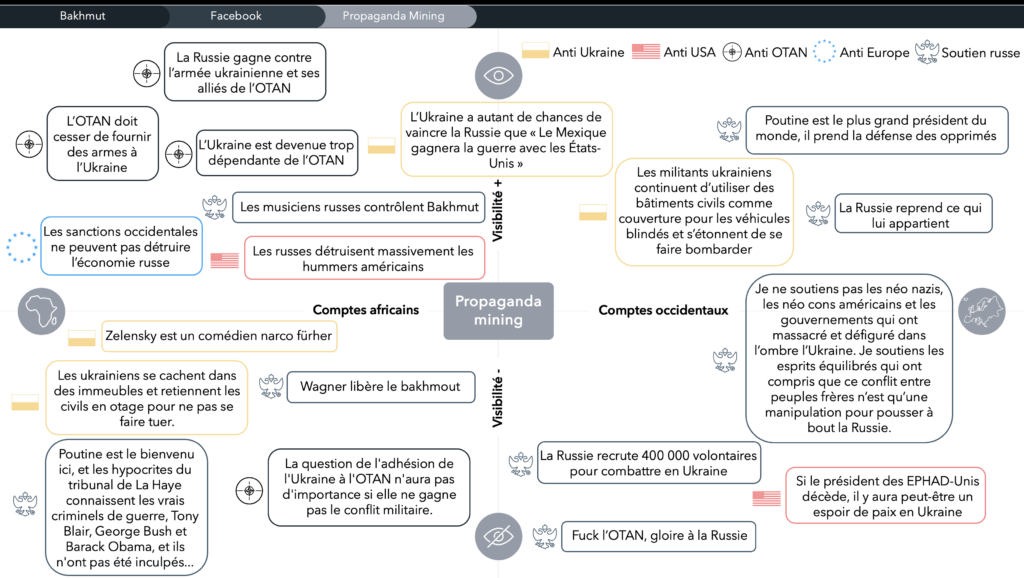
On Facebook, attempts to contextualize or counter the propaganda efforts are moderated in the comments:
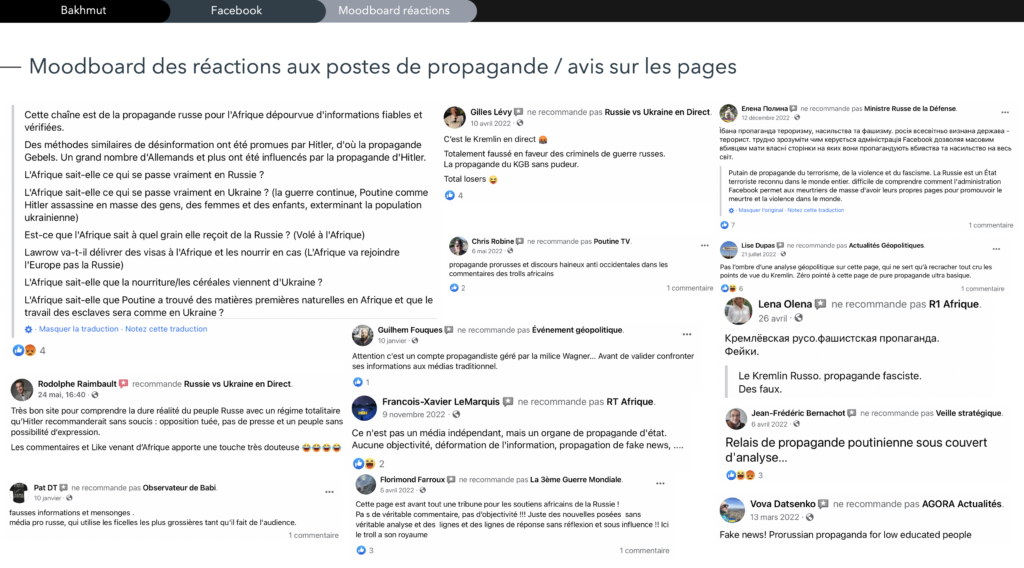
It’s also possible to identify accounts that are clearly organized with strikingly similar messages:
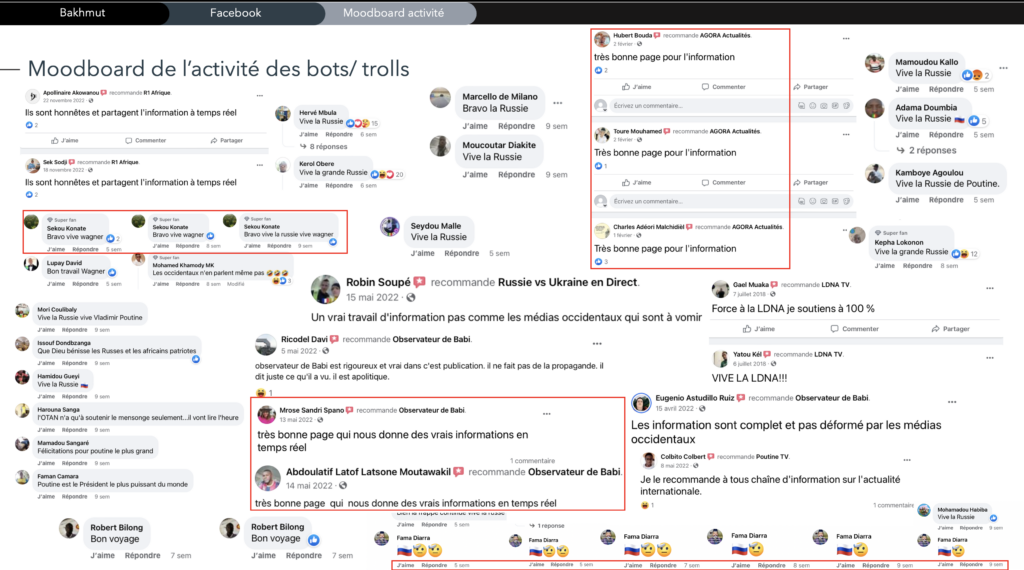
Since then, Facebook has become almost deserted, with only media accounts remaining:





